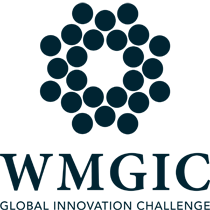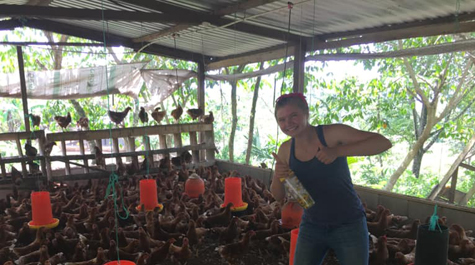W&M Global Innovation Challenge moves online, showcases resiliency and adaptability
After nine months of planning, the fourth annual Global Innovation Challenge at William & Mary (WMGIC) had more than 100 student participants and 20 external professionals ready to tackle a case competition following W&M’s spring break.
However, with COVID-19, the threat of cancellation loomed over the competition. The student team was faced with a decision — reschedule for the fall or embrace innovation.
The 10-member student executive board, in consultation with their external judges and mentors, determined it would move forward, with the format reworked to proceed entirely over online communications platforms. 
Even before moving online, WMGIC was unique in its content, format, multidisciplinary nature and intercollegiate scope. The competition is designed as a 24-hour, hack-a-thon style case competition in which student teams, guided by professional mentors, create a sustainable and cost-conscious solution to an international and sustainable development concern.
The initial idea for the competition began in 2016 when Sarah Martin ’17 and Samya Jothishankar ’17 pitched a proposal to the Global Research Institute.
They aimed to create a medium for students to engage with real-world international development problems and create innovative, sustainable solutions with potential real-world applications. In founding WMGIC, Martin and Jothishankar hoped to bring together the William & Mary community to learn from and engage with each other.
{{youtube:medium|RtRZ8zuuGks, Global Innovation Challenge}}
This year, 19 student teams from both W&M and the University of Virginia competed entirely remotely. Teams were interdisciplinary, with students from many different majors and all schools within the university.
“I think our team's business background helped in identifying a go-to-market strategy and really identifying where our solution fits within the scope of the market,” said Kareem Al-Attar ’21, whose team won second prize. “Being able to identify risks and barriers to entry and find a path to profitability were essential in developing our idea. Our team definitely enjoyed the emphasis on international development, which isn't touched on a lot in other competitions we have competed in.”
Teams were guided by mentors and judges who work professionally in the field of international and sustainable development, representing organizations such as Chemonics International and the U.S. Department of State. More than half of mentors are recent William & Mary alumni, including Yulia Buynova ’19, who competed in last year’s WMGIC as an undergrad.
This year’s case focused on challenges in Guatemala, including public health concerns, economic disparities and peacebuilding after the fraught conflict of the 1960-96 Guatemalan civil war.
Teams were organized into either governance, social entrepreneurship or technology streams, and they were tasked with developing an innovative solution within these bounds that promoted both sustainability and equity in Guatemala in line with the UN Sustainable Development Goals (SDGs). With the hypothetical boundaries of $1 million and a one-year implementation period, student teams were asked to generate a workable solution to a global problem.
“I was very impressed with the quality of presentations that the students delivered — especially because of the limited time and the little knowledge that they had about Guatemala,” said Jorge de Leon Miranda, a Guatemala native and WMGIC IV mentor who currently works at the Inter-American Development Bank. “They were able to develop high quality ideas that not only met the judging criteria, but delivered high quality, doable and sustainable projects for the Guatemalan context with limited mentoring and research.”
Highlights from the top presentations included Team Triple A’s proposal to resolve land disputes with an accessible geospatial database, Team Novigado’s proposal for using natural waste in coffee production to create respiratory protective materials and the winning team’s proposal to combat malnutrition by financially empowering women community leaders with microloans.
Grand prize winner Madeleine Walker ’21 reported that she “loved participating in WMGIC because not only did it provide a needed distraction, but also allowed me to apply what I learned during my GRI summer fellow experience in Guatemala last summer. … It feels so special to realize how much I actually did learn while I was there, and be able to apply it to WMGIC. Winning first place also allows me to give back to the NGO (CHOICE Humanitarian Guatemala) that welcomed and taught me so much for 10 weeks.”
The winning teams are able to take their ideas outside of William & Mary to compete in other competitions and test their feasibility in real-world problem solving. Walker said the quick adaptation to a remote format exemplified William & Mary’s commitment to adaptive learning and a focus on problem solving in learning and teaching.
WMGIC encourages innovative thinking and global citizenship, and the resiliency of the competition in the face of COVID-19 exemplifies the adaptability of the volunteering professionals, student participants and executive board, Walker added.
The competition was made possible thanks to the support of WMGIC’s on and off-campus sponsors, including the Global Research Institute, the W&M Green Fee and DHInfrastructure, founded by Denzel Hankinson ’94.
 Skip to main content
Skip to main content

